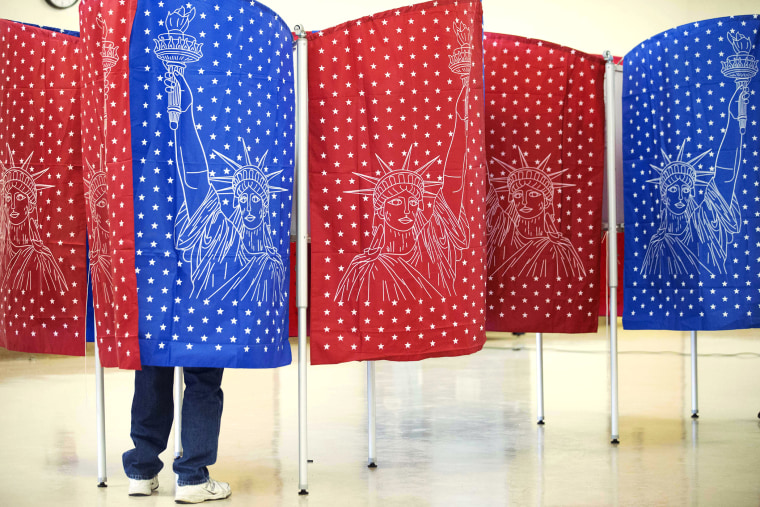Stuart Rothenberg, a longtime campaign observer, conceded on Twitter yesterday, "OK, so maybe the Senate is 'in play.' That's the first time I have said or written that." This morning, NBC News' First Read team came to a similar conclusion.
The takeaway from the trio of NBC/Marist polls we released this week is that, yes, Democrats do have a legitimate path to retaking the Senate in November. Given the Senate map, it's probably not the most likely outcome. But it's a real possibility -- more than most people might think.
As we've discussed before, at first glance, Republican control of the Senate probably appears fragile. After all, the GOP majority now stands at just 51 seats, which means the party has little margin for error. With signs of a possible "blue" wave building, a net gain of two Senate seats for Democrats hardly seems outrageous.
But the relevant details matter -- and the Senate map this year is tilted in Republicans' favor to an extraordinary degree. Nate Silver had a FiveThirtyEight piece earlier this year that explained, "Just how bad [is the 2018 map for Senate Democrats]? It's bad enough that it may be the worst Senate map that any party has faced ever, or at least since direct election of senators began in 1913. It's bad enough that Democrats could conceivably gain 35 or 40 seats in the House ... and not pick up the two seats they need in the Senate."
At the time, the path to Democratic control looked incredibly narrow. Many observers saw possible pick-up opportunities in Arizona and Nevada, but even if the party's candidates won those tough races, Democratic incumbents would then need to run the table, winning literally every other contest -- including a whole bunch of red-state races -- to eke out a majority.
But the landscape has evolved in recent months in some unexpected ways.
In Tennessee, for example, where incumbent Sen. Bob Corker (R) is retiring, a new NBC News/Marist poll found former Gov. Phil Bredesen (D) narrowly leading Rep. Marsha Blackburn (R), 48% to 46% -- and this wasn't the first poll showing the moderate former governor in the lead.
In Texas, meanwhile, Sen. Ted Cruz (R) originally looked like a safe bet to win a second term, but Rep. Beto O'Rourke (D) is within striking distance, creating a competitive race in a state Republicans thought they'd win easily.
It's best not to overstate matters. Republicans may have a hard time holding onto their House majority, but their Senate odds are better than 50-50. It's also safe to say, however, the GOP's odds are worse than they were earlier this year, and they may yet get worse still.
For Republicans, I'd say the Senate seats they should be concerned about -- ranked from most competitive to least -- are in Nevada, Arizona, Tennessee, Texas, and Mississippi. For Democrats, facing a much more challenging map, the seats to worry about are in North Dakota, Missouri, Florida, Indiana, West Virginia, and Montana.
NBC News' First Read report added this morning, is Democratic control "the most likely outcome? Probably not. But is it more in play than most think? Yes, especially since toss-up races traditionally do break one way."
After the 2016 elections, Republicans looked ahead to 2018 and thought they had a realistic shot at increasing their majority to a filibuster-proof 60 seats. No one's talking about that anymore.
